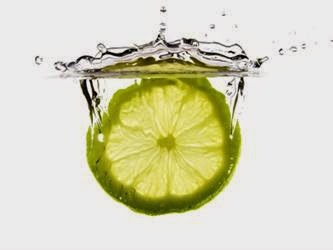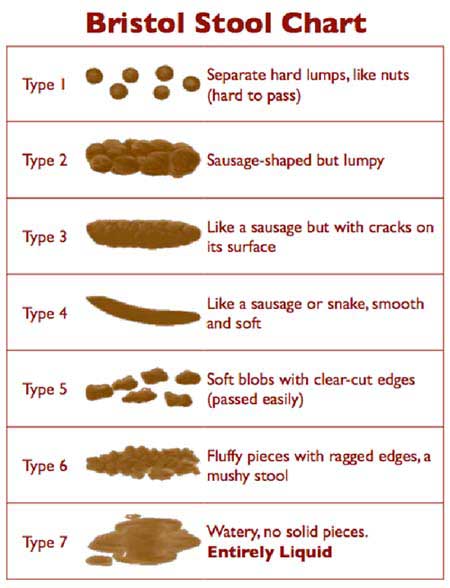Did you know the Ancient Egyptians believed that eating lemons and drinking lemon juice was an effective protection against a variety of poisons, and that recent research has confirmed this belief?
There are many health benefits of lemons that have been known for centuries. The two biggest are lemons’ strong antibacterial, antiviral, and immune-boosting powers and their use as a weight loss aid because lemon juice is a digestive aid and liver cleanser. Lemons contain many substances--notably citric acid, calcium, magnesium, vitamin C, bioflavonoids, pectin, and limonene--that promote immunity and fight infection.
These are well-known health facts about lemons. But there’s so much more to this little yellow fruit. Here are 15 that I’ll bet you didn’t know. Whether you use them in the form of juice, teas, drinks, dressing, poultices or in the bath, take advantage of lemons’ natural healing power.
Abolish Acne
Lemon contains citric acid, which can be effective in treating acne. The vitamin C found in citrus fruits is vital for that healthy glowing skin while its alkaline nature kills some types of bacteria known to cause acne. In addition to drinking lemon juice with water first thing in the morning, here are some suggestions on how to prepare a homemade acne treatment using lemon:
· With your finger or a cotton ball, apply fresh lemon juice on acne and leave it overnight. Wash with water the following morning. There may be an uncomfortable sensation of burning at first, but it will soon disappear.
· Mix one part of freshly squeezed lemon juice with an equal part of rose or honey water. Put the mixture on affected areas for at least half an hour. Wash it afterwards with water. This application should be repeated twice daily, ideally in the morning and the evening.
Note: these remedies are safe and natural, but if acne is severe or there are open wounds, consult your doctor first.
Abandon Your Anxiety
Research has shown that lemon balm has a calming effect and therefore may be able to help remove fatigue, exhaustion, dizziness, anxiety, nervousness, and tension. It is also believed that inhaling lemon oil helps in increasing concentration and alertness. It can therefore be used as a room freshener in offices to increase the efficiency of the employees. If you’re feeling tense sprinkle a few drops of lemon balm essential oil on a handkerchief to inhale.
Canker Sore, No More
The proven antibacterial and antiviral properties of lemons can accelerate the healing process in the case of cankers. Mix the juice of freshly squeezed lemon into a glass of lukewarm water and rinse your mouth with this solution; do this three times a day. There may be a burning sensation when the lemon juice comes into contact with the canker, however, the more frequently you use it, the less burning there will be.
Leave the Fever
Chills and fevers may be due to a variety of causes, but the lemon is always a helpful remedy. Here is a method that can ease symptoms: add the juice of 1 lemon to a cup of hot water with honey and drink at once, then every 2 hours until the fever or chill subsides.
Cold and Flu Got You Blue?
When you have a cold, the healing power of lemons works both internally, by supplying urgently required vitamin C to your defense cells, and externally, through the application of its antiviral properties to the virus on the mucous membranes in the nose and throat.
At the first indication of a cold – a runny nose or sore throat –try to give your body as much immune-boosting vitamin C as you can so that the virus is eliminated before it gets a chance to take hold. Drink the freshly squeezed juice of 1 lemon in a glass of lukewarm water every 2 hours.
If you have a sore throat, add the juice of 1 lemon and 1 teaspoon (5ml) of sea salt to 1 cup (250ml) lukewarm water. Gargle three times a day for 1 minute to diminish the burning sensation. If it’s a case of tonsillitis, gargle every 2 hours for at least 30 seconds with the freshly squeezed juice of 1 lemon. Tilt the head back to allow the antibacterial and antiviral properties of the juice to flow into the back of the throat. You can swallow the juice when you have finished gargling thereby benefiting from an immune-boosting vitamin C shot.
Cure Corns and Calluses

Lemon poultices applied overnight are a good home remedy for corns and calluses. Place a slice of lemon approx 5 mm thick on to the corn, bandage and fasten. Dabbing the affected area with lemon essential oil also helps accelerate the healing process. Take care to only use the undiluted oil on the callused area using a cotton ball or Q- tip, as it is too strong for un-callused skin.
Erase Eczema
If you suffer from skin infection such as eczema, a lemon wrap may offer relief. Add 8 drops of lemon essential oil to 1 cup (250ml) lukewarm water and 1 tablespoon (15ml) of liquid honey. Honey also has anti-inflammatory effect and strengthens the healing power of lemon.
Soak a linen cloth in the liquid, squeeze out the excess, and gently place the cloth on the affected area for 15 minutes, 2 to 3 times a day. Not only will this ease the infection, it will counter the overwhelming urge to scratch.
Fight Fatigue
Long distance walkers, world travelers, and explorers look upon the lemon as a Godsend. When fatigue sets in, they might suck lemon juice by piercing the top of the fruit with a straw, giving themselves a quick-acting medicine and a lovely refreshment.
Explorers also use lemon for protection against many infections of the tropics. A small amount of lemon juice will quench thirst more effectively than many times the amount of water. Experienced travelers declare that when they add lemon juice to ordinary drinking water, in various localities, it acts as an antiseptic and prevents illness due to allergy to different water supplies.
Lemon oil also seems to be able to stimulate brain activity so whenever you feel tired for no reason or are finding it hard to focus or concentrate, add 4 drops of lemon oil to a water-filled aromatherapy lamp. Alternatively, drink a glass of lemon water every few hours.
Hexed with Halitosis?
Lemons can help freshen breath that has gone sour after consuming certain spices, alcohol, cigarettes, or that is caused by insufficient salivation. To keep breath fresh, thoroughly rinse your mouth several times a day with the freshly squeezed juice of 1 lemon in a glass of lukewarm water. Chewing on a lemon slice after every meal will also help.
Healing Hypertension
Garlic and onions have been shown to be effective in the fight against hypertension, and they combine well with the healing power of lemon. Add 3 crushed garlic cloves and 1 chopped onion to 1 quart or cold skimmed or low fat milk or soy milk. Slowly bring to the boil and let it stand for 5 minutes. Pour through a sieve and chill. Add the freshly squeezed juice of 3 lemons and sip throughout the day.
And if you suffer from high cholesterol, don’t forget that the pectin power in lemons along with its other metabolism and circulation boosting nutrients can help lower cholesterol.
Smite a Bug Bite
If the stinger is still in the skin, take it out with a pair of tweezers. Massage 1 to 2 drops of lemon oil, mixed with 1 teaspoon of honey, into the skin around the bite.
To repel insects, add 20 drops of lemon oil to 1 cup (250ml) of water and spray into the air. It smells great and repels insects at the same time. Another home remedy is to place a cotton ball soaked in lemon oil in your bedroom. If you are sitting outside in the evening, apply lemon scent to skin areas not covered in clothing. Or, add 10 drops of lemon oil to 1 ½ oz of sunflower oil and rub into the skin.
Put Insomnia to Rest
Several studies have found that lemon balm combined with other calming herbs (such as valerian, hops, and chamomile) helps reduce anxiety and promote sleep. In a recent double-blind, placebo-controlled study, 18 healthy volunteers received two separate single doses of a standardized lemon balm extract (300 mg and 600 mg) or placebo for 7 days. The 600 mg dose of lemon balm increased mood and significantly increased calmness and alertness.
Even though it tastes bitter, lemon juice has a powerful alkaline effect in the body and is therefore a natural agent against excess acid, which is in part responsible for rheumatism. Drink the freshly squeezed juice of 1 lemon in a glass of lukewarm water 3 times a day and if you experience severe pain add the juice of 2 lemons 3 times a day.
Lemon oil has pain-relieving qualities, so to inhibit inflammation and ease pain, massage the affected area daily with several drops of lemon oil mixed with 1 tablespoon (15ml) jojoba oil.
Save your Stomach
Drink the juice of 1 freshly squeezed lemon in a glass of lukewarm water after each meal. The lemon acid will stimulate the production of stomach acid and the activity of stomach muscles.
Say Adios to Varicose
Lemon oil has vessel-strengthening properties that can help fight varicose and spider veins. For spider veins, take 2 to 3 drops of lemon oil every day and mix in a small bowl with jojoba, avocado or almond oil and massage the affected area.
For varicose veins,add 6 drops of lemon oil to 1 ½ oz (50 ml) wheat germ oil, and 2 drops each of cypress and juniper oil. Use this mixture daily for a gentle massage of the legs from bottom to top, in the direction of the heart. For a vein and vessel-rejuvenating bath add 8 drops of lemon oil to a warm bath. Also add 4 drops of cypress oil blended with 1 tablespoon (15ml) of honey. Soak in the bath for 15 minutes and when you come out, pat your skin dry – don’t rub it.
Medical Precautions Note: If you suffer from heartburn, kidney or gall bladder problems or have a citrus allergy consult your doctor before using these remedies or drinking lemon juice. To protect your teeth enamel, wait at least half an hour before brushing your teeth after chewing, drinking or rinsing with lemon juice. Rubbing lemon juice or oil and drinking lemon juice is not suitable for children under the age of 10. Lemons are effective home remedies for a variety of health concerns but in the case of serious
By Theresa Cheung
















